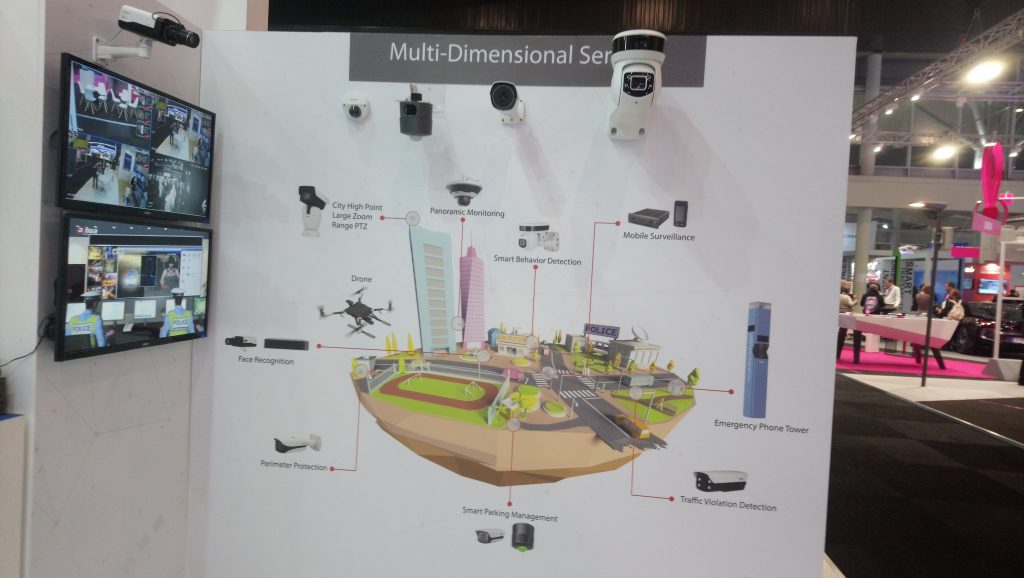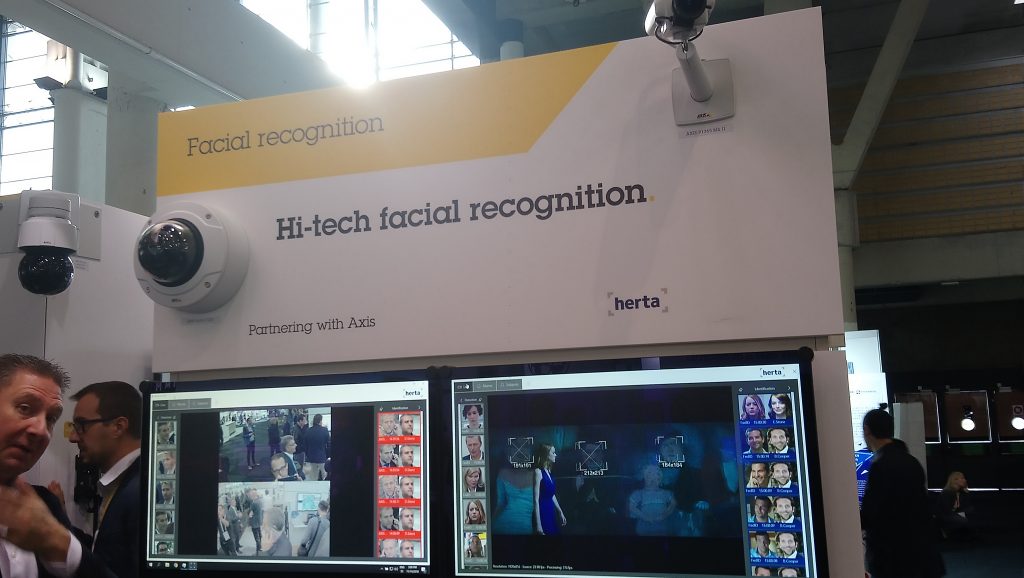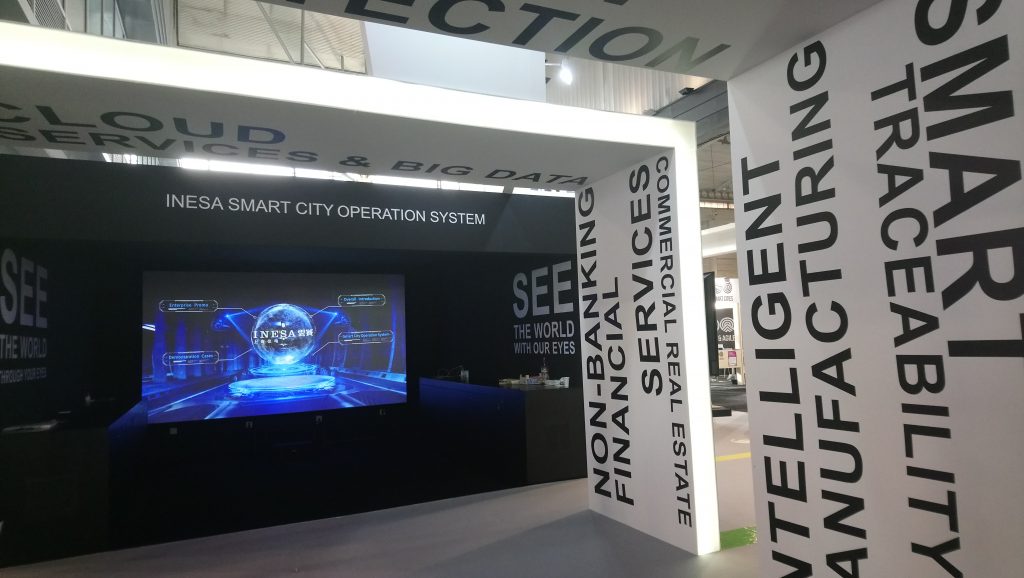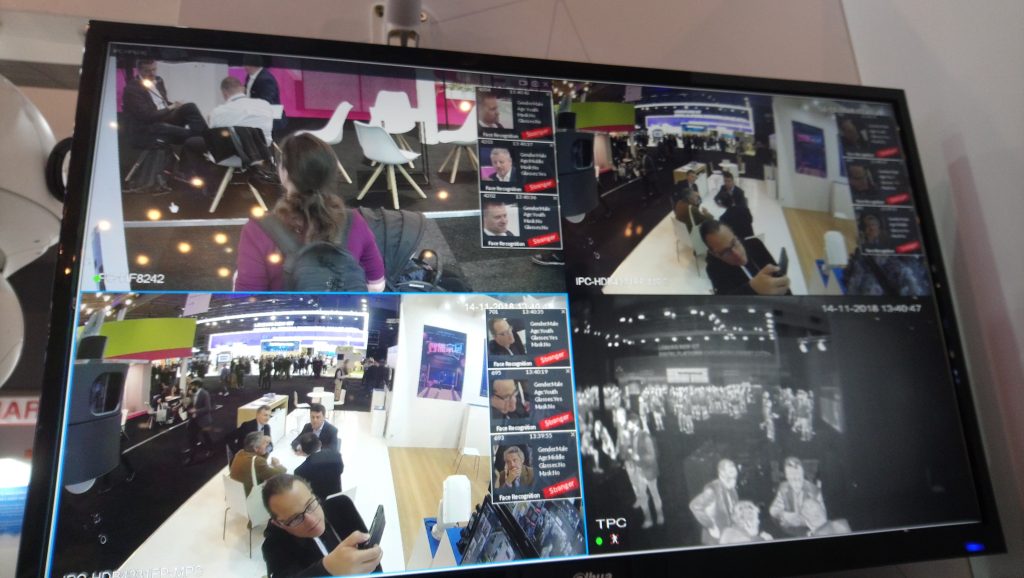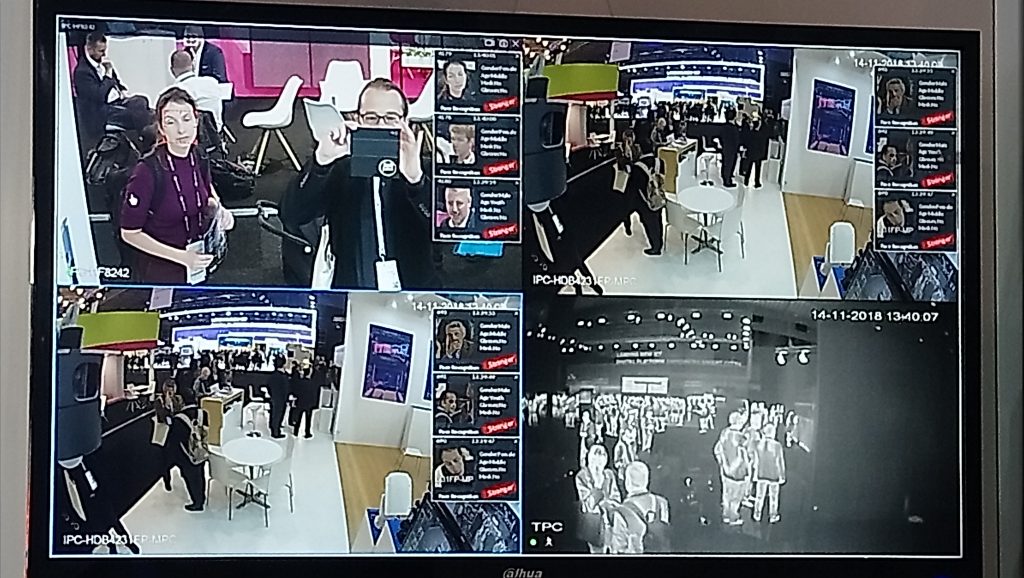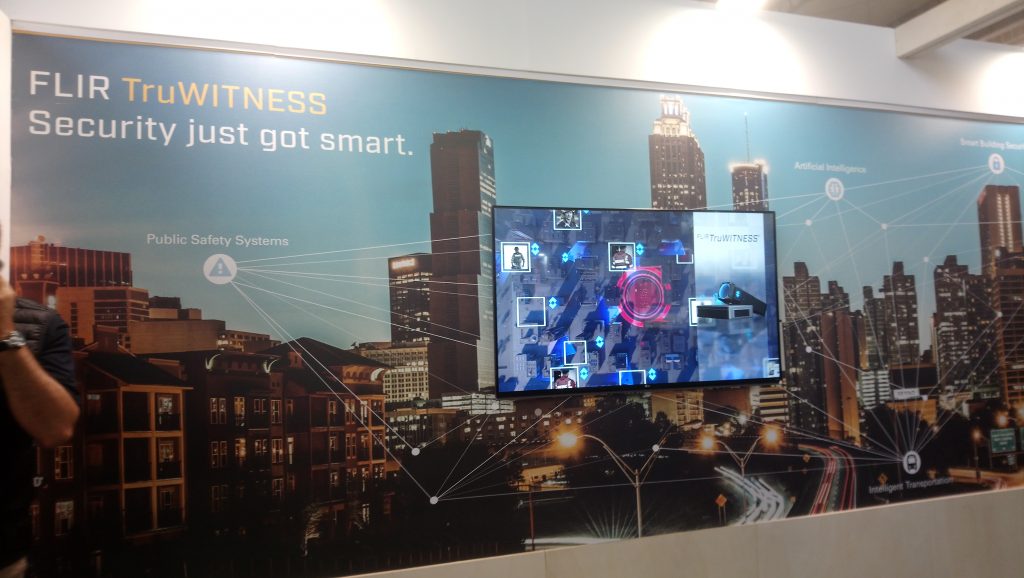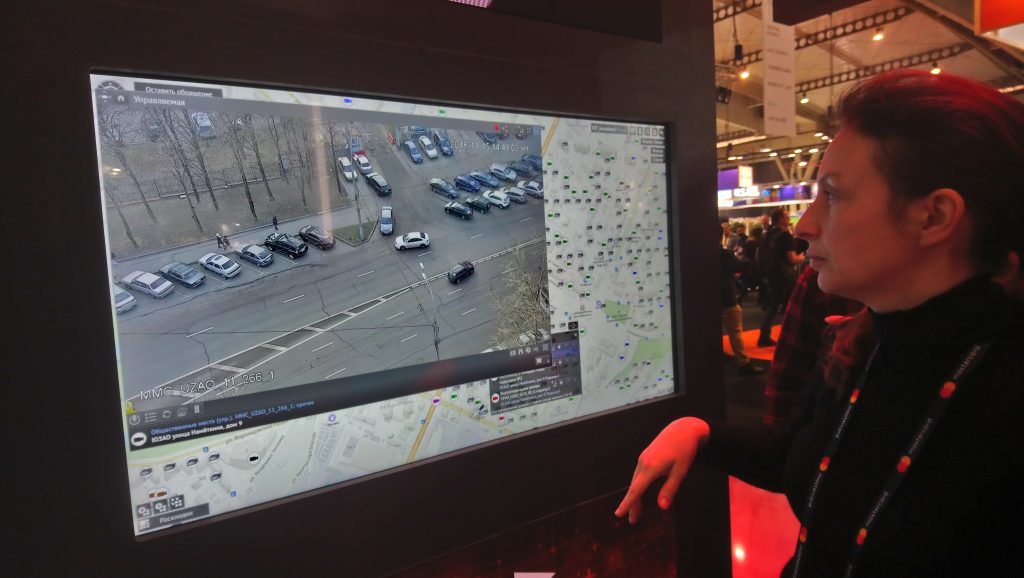
In November I had the chance to visit the opening of the group exhibition ‘sensu lato :: im weiteren Sinne’ at Akademie Graz, and learn more about the exhibited works during a “Making of Presentation.”
One of the most interesting works was the Neuleittorgasse. To generate the images seen in the photo above a neural network was feed with over 100.000 images of streets in Graz. The idea was to generate new street views using a modified version of the “Deep Convolutional Generative Adversarial Network”. The artwork is a part of experiments that a group of artist conducted within the framework of the ‘Im Netz der Sinne’ project organized by mur.at in Graz, Austria.
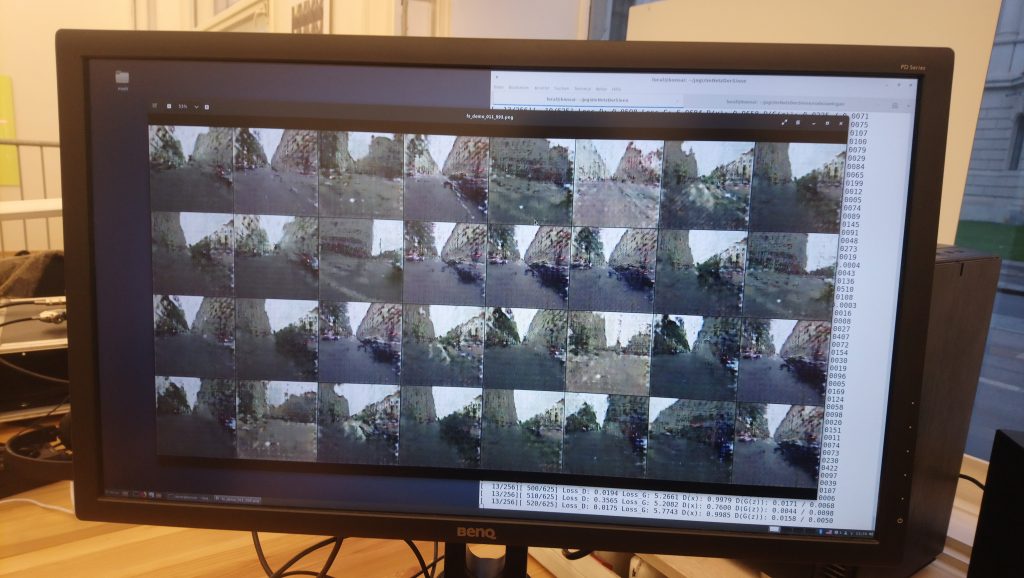
During the presentation Jogi Hofmüller showed me how the neural network processed iterations of images (image abow). How the generator was producing “fakes” or “own versions” of the the images based on the 100.000 street views from Mappilary. In a Generative Adversarial Network the generated images are then approved or not by the so called discriminator. This enables the machine to learn and getting better in generating images. It is described to be a kind of competition between the generator and the discriminator. The generator trying to make images as close to the ones in the data set and kind of fooling the discriminator, whereas the discriminator is getting better in distinguishing between the images from the data set and the generated ones.
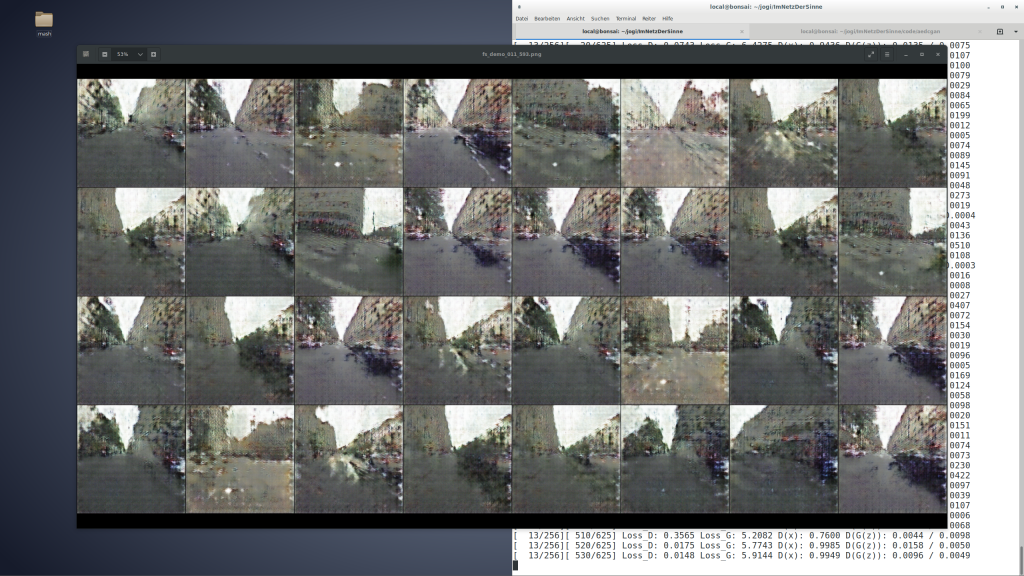
The artists described the process of working with machine learning as very fascinating. In the start of the process when the algorithm is just starting to extract features from the data, be it images or sounds the first generative examples are just noise. Slowly after repeating the loop hundreds of times the images start to show features in this case of streets, buildings, cars and trees hovering in the air. The image gets clearer until suddenly only gray noise is produced again. The generator was trying something new.
To better understand the process of machine learning, members of the machine learning group were conducting exercises common among computer science students. One of them was to train a neural network. One of the members has been collecting images of orchids for decades and this collection was used to train a neural network. The results were also exhibited providing deeper understanding of various steps of machine learning as well as creating a timeline of how and what the group had learned about machine learning.
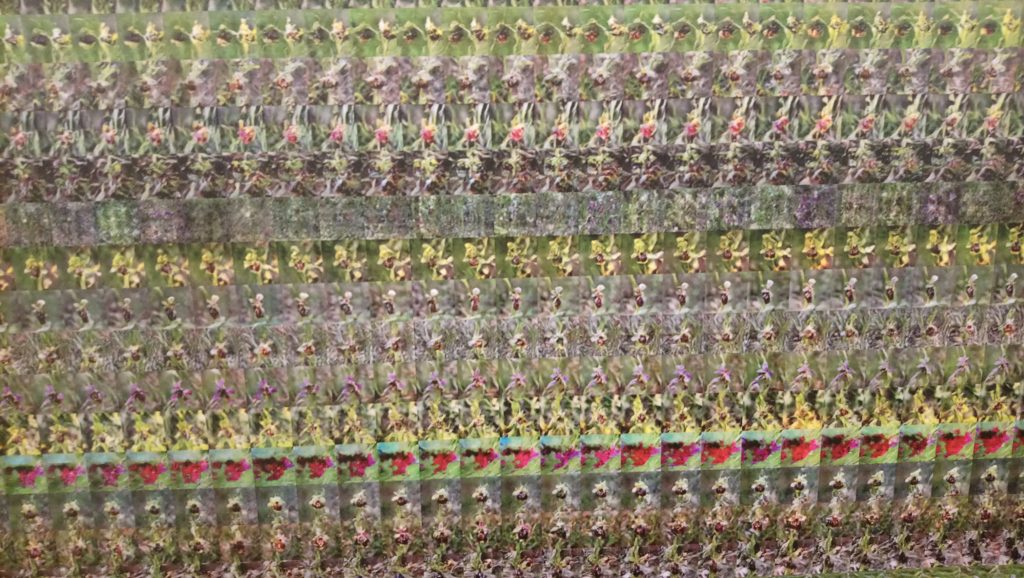
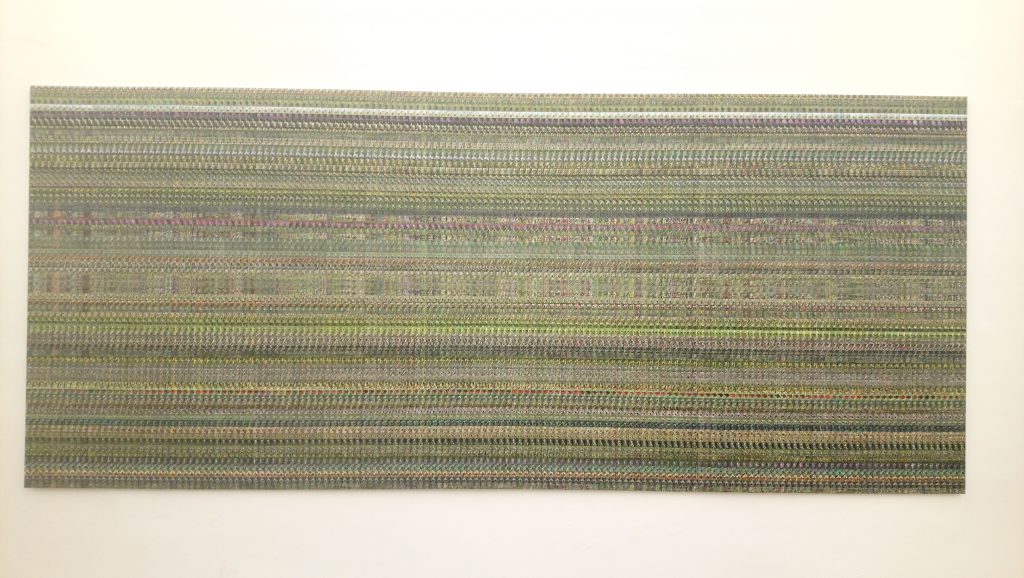
After training the neural network with orchid images from the data set new images of orchids were machine generated. In the presentation the artists explained how the real orchids actually imitate insects and in the generated images this aspect was emphasized.
Also other aspects of object recognition in computer vision was discussed in the making of session and represented in the artworks. For example the images above describe how the machine processes images to recognize human objects in images. While our human eye is trained to recognize clusters of objects it gets a great deal harder for the machine to recognize groups of things.
sensu lato :: im weiteren Sinne
at Akademie Graz 23.11.2018 – 14.12.2018
Im Zentrum der künstlerischen Arbeit von mur.at steht 2018 das Thema Machine Learning. Dieser Begriff bezeichnet ein Verfahren, bei dem Maschinen aus einer Vielzahl von Beispielen Muster extrahieren und diese verallgemeinern können. Weitgehend verborgen beeinflussen derartige Systeme mehr und mehr unsere Leben.
In der Ausstellung sensu lato :: im weiteren Sinne präsentiert das Projektteam die Ergebnisse der knapp einjährigen Auseinandersetzung mit verschiedenen Formen maschinellen Lernens.
Titel der Ausstellung ist “Sensu lato – im weiteren Sinne“
Künstler*innen aus der mur.at Community
Beteiligte/Künstler*innen:
Merna El-Mohasel
Christian Gölles
Jogi Hofmüller
Reni Hofmüller
Dietmar Jakely
Margarethe Maierhofer-Lischka
Elena Peytchinska
Martin Rumori
Dorian Santner
Martin Schitter
https://mur.at/project/sensu-lato/
Links to articles and videos that explains computer vision, machine learning and generative adversarial networks more detailed:
An introduction to Generative Adversarial Networks
Generative adversarial network
Machine Learning is Fun! Part 3: Deep Learning and Convolutional Neural Networks
Stanford Computer Vision Lecture Series on Youtube

